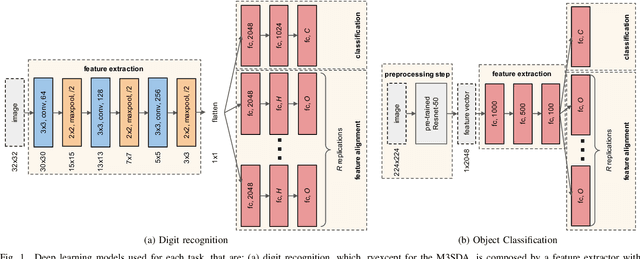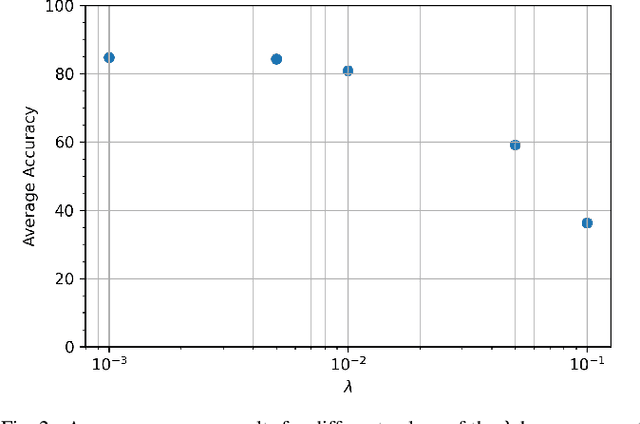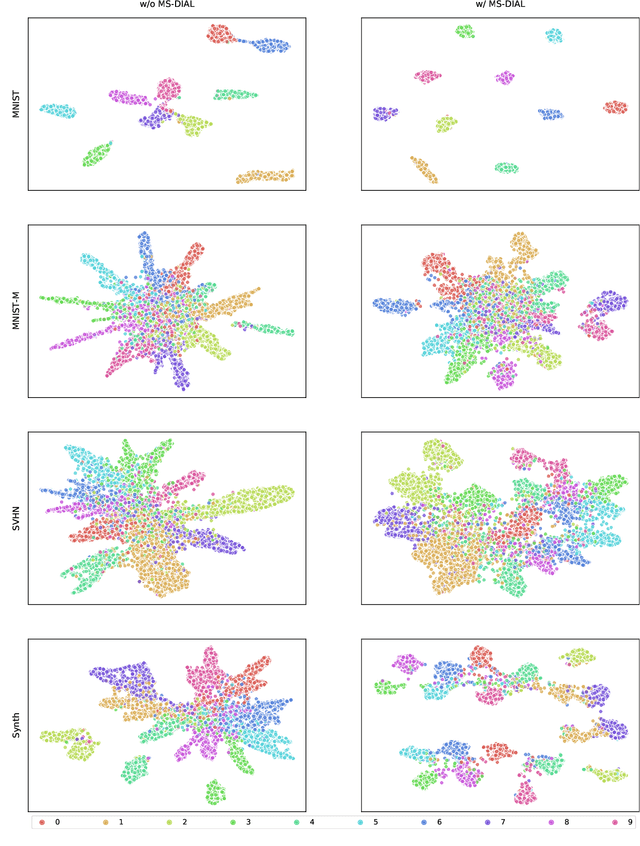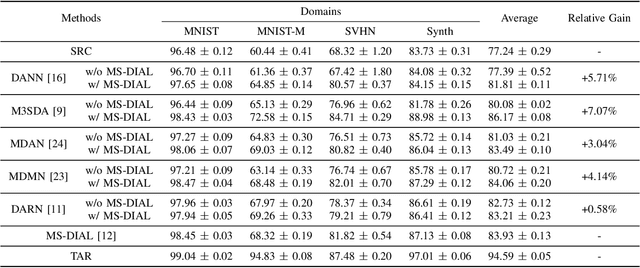Fábio Augusto Faria
Improving Transferability of Domain Adaptation Networks Through Domain Alignment Layers
Sep 06, 2021



Abstract:Deep learning (DL) has been the primary approach used in various computer vision tasks due to its relevant results achieved on many tasks. However, on real-world scenarios with partially or no labeled data, DL methods are also prone to the well-known domain shift problem. Multi-source unsupervised domain adaptation (MSDA) aims at learning a predictor for an unlabeled domain by assigning weak knowledge from a bag of source models. However, most works conduct domain adaptation leveraging only the extracted features and reducing their domain shift from the perspective of loss function designs. In this paper, we argue that it is not sufficient to handle domain shift only based on domain-level features, but it is also essential to align such information on the feature space. Unlike previous works, we focus on the network design and propose to embed Multi-Source version of DomaIn Alignment Layers (MS-DIAL) at different levels of the predictor. These layers are designed to match the feature distributions between different domains and can be easily applied to various MSDA methods. To show the robustness of our approach, we conducted an extensive experimental evaluation considering two challenging scenarios: digit recognition and object classification. The experimental results indicated that our approach can improve state-of-the-art MSDA methods, yielding relative gains of up to +30.64% on their classification accuracies.
 Add to Chrome
Add to Chrome Add to Firefox
Add to Firefox Add to Edge
Add to Edge